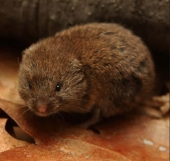


Many things struggle to grow in my thin, rocky Cape Breton soil. I seeded daikon/tillage radishes everywhere but the roots don't get very big here. It has reseeded and occasionally I find a big root, in with the gazillion seed pods... (progress?) Lupines seem to grow everywhere here. They're invasive but at least they're pretty and I've read they help to concentrate calcium in the soil.


Laura K wrote:I have been thinking about these for what feels like forever but never got around to building them anywhere that I lived. Then my parents moved to Maine, and one time I was visiting them and saw them in their windows! I don't know if they came with the house (not the kind of thing my dad would build, but maybe...), but it was cool to see them being used "in the wild"!
Other than being a little delicate, I love that you can still see out the windows. My head continue to swirl with modifications (usually more complicated and more expensive, but maybe not much) -- solid plastic or plexiglas panels, one that I would like to hinge so that I can still open one of the two windows it would cover......
They are the perfect Kreg jig project!


